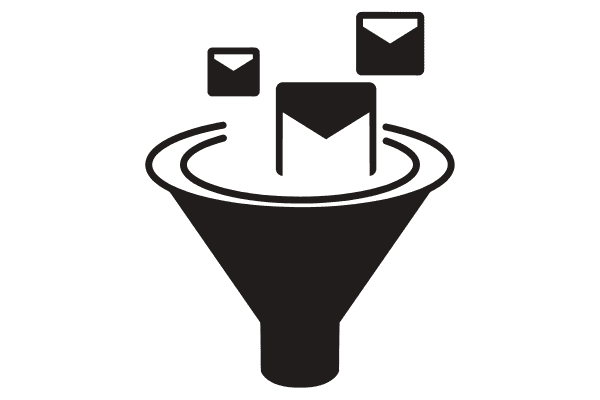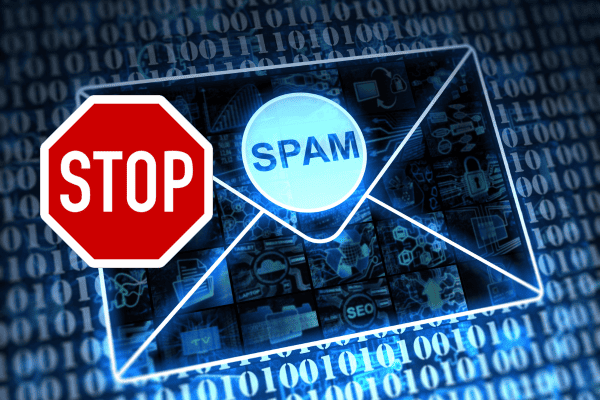7 Tips on How to stop emails going to Spam (2023)
Boost Your Email Open Rates with These 7 Spam Filter Avoidance Techniques
Are your marketing emails getting lost in the abyss of spam folders? It’s a frustrating experience. Well, fear not! We’re here to help you navigate the treacherous waters of email spam filters and ensure your messages reach their intended recipients.
Understanding How to stop emails going to Spam is crucial for successful marketing campaigns. These sneaky filters can significantly impact your email deliverability, leaving you with an abysmal open rate. But worry not because we’ve got some tricks to improve your email deliverability and get your message seen by more people.

So, buckle up and prepare as we dive into practical strategies to skyrocket your email success. From clever subject lines to content optimization techniques, we’ll show you how to beat those pesky spam filters at their own game.
Say goodbye to wasted efforts and hello to higher engagement rates with our expert advice.
Let’s jump in and unlock the secrets of avoiding email spam filters together!
Understanding How Email Spam Filters Work
How to stop emails from going to Spam
Spam filters are crucial in keeping our inboxes free from unwanted emails. To ensure your messages reach the intended recipients, it’s essential to understand how these filters operate. Here are the key aspects to consider:
Criteria Used by Spam Filters
Email spam filters employ various criteria to classify incoming messages. By familiarizing yourself with these factors, you can increase the chances of your emails being delivered:
- Sender reputation: A sender’s history and credibility significantly impact email filtering. Maintaining a positive reputation by consistently sending relevant and valuable content helps avoid being marked as Spam.
- Content analysis: Spam filters scrutinize the content of an email for specific patterns or indicators commonly associated with Spam. Avoid using excessive capitalization, misleading subject lines, or excessive promotional language.
Influence of Sender Reputation and Content Analysis
Understanding how sender reputation and content analysis influence email filtering is vital for avoiding spam filters:
- Sender reputation: Building a solid sender reputation requires adhering to email best practices. This includes obtaining permission from recipients before sending emails, promptly handling unsubscribe requests, and ensuring low bounce rates.
- Content analysis: Crafting well-written emails that provide value to recipients is crucial. Avoid using trigger words commonly associated with Spam, such as “free,” “urgent,” or “guaranteed.” Refrain from using excessive links or attachments in your messages.
By comprehending the functioning of email spam filters and considering sender reputation and content analysis, you can enhance the deliverability of your emails while minimizing the risk of being flagged as Spam.
Remember, maintaining a positive sender reputation and creating high-quality content are critical elements in successfully navigating email spam filters.
Importance of Avoiding Email Spam Filters for Successful Marketing

Enhancing Brand Reputation with High Deliverability Rates
- High deliverability rates are essential for successful marketing campaigns.
- When emails land in recipients’ inboxes instead of being filtered as Spam, it increases the chances of engagement and conversion.
- Avoiding email spam filters keeps your brand’s reputation intact and trustworthy.
- A good sender reputation helps build credibility among subscribers, leading to stronger customer relationships.
Negative Impact of Being Flagged as a Sender of Spam Emails
- Email providers use sophisticated algorithms to identify spam emails and protect users from unwanted content.
- If your emails are consistently flagged as Spam, it can harm your marketing efforts.
- Being marked as a spam sender can damage your brand’s reputation and result in lower open rates and conversions.
- Ensuring your email campaigns comply with best practices and avoid triggering spam filters is crucial.
Common Triggers that Activate Email Spam Filters
Identifying the common elements that trigger email spam filters is essential for successful email marketing. Understanding these triggers ensures your emails reach your recipients’ inboxes and avoid being flagged as Spam. Here are some key points to keep in mind:
Words, Phrases, and Formatting
When crafting your emails, be cautious of specific words, phrases, and formatting choices that may raise red flags for spam filters. To avoid triggering these filters:
- Steer clear of using all capital letters or excessive punctuation!!! These are often associated with spammy content.
- Avoid using words like “free,” “guaranteed,” or “urgent” excessively, as spam filters commonly flag them.
- Be mindful of excessive use of exclamation marks (!!!) or dollar signs ($$$), as they can also trigger spam filters.
- Please refrain from using too many hyperlinks or embedding large images in your emails, as this can make them appear suspicious.
Importance of Testing

Testing your emails before sending them out is crucial to ensure they bypass spam filters. Here’s why it matters:
- Subject Line Testing: Test different subject lines to determine which ones perform best and are less likely to be marked as Spam.
- Content Testing: Use tools like SpamAssassin or Litmus to analyze your email content for potential issues and identify areas that might trigger spam filters.
- Preview Text Optimization: Attention to the preview text displayed alongside the subject line. Optimize it strategically to entice readers without raising any red flags.
By thoroughly testing your emails, you can fine-tune them to maximize deliverability while minimizing the risk of triggering spam filters.
Crafting Relevant and Engaging Email Content
Crafting email content that is both relevant and engaging is essential for avoiding email marketing spam filters. By following these techniques, you can create valuable content that resonates with your subscribers and improves engagement rates.
Techniques to Create Engaging Content:
- Use attention-grabbing subject lines to entice recipients to open your emails.
- Incorporate storytelling techniques to captivate readers and make the content more relatable.
- Include visually appealing elements such as images, videos, or infographics to enhance the experience.
- Keep the email concise and focused, delivering the message effectively without overwhelming the reader.
- Utilize a conversational tone that feels personal and encourages interaction.
Personalization and Segmentation:
Personalizing your emails based on subscriber data can significantly improve engagement rates. Consider implementing the following strategies:
- Segment your email list based on demographics, interests, or purchase history to deliver targeted content.
- Address recipients by first name in the email greeting for a more personalized touch.
- Tailor the content according to each segment’s preferences and needs.
Balancing Promotional Content with Useful Information:
Finding the right balance between promotional content and valuable information is crucial for maintaining subscriber interest. Here are some best practices:
- Provide helpful tips, insights, or educational resources related to your industry or niche.
- Share exclusive discounts or promotions sparingly to avoid appearing overly sales-focused.
- Mix promotional messages with informative newsletters or updates that offer genuine value.
You can increase engagement rates by crafting relevant and engaging email content through personalization, segmentation, and balancing promotional material with helpful information while avoiding spam filters. Remember to continually assess your email marketing strategy’s effectiveness by analyzing open rates, click-through rates, and subscriber feedback.
Optimizing Email Subject Lines for Deliverability
Effective subject lines are crucial in avoiding spam filters and ensuring your emails reach the intended recipients. By optimizing your subject lines, you can significantly increase open rates and enhance deliverability. Here are some strategies to consider:
Understand the significance of well-crafted subject lines
Well-crafted subject lines play a vital role in bypassing spam filters. They help establish trust with email service providers and recipients, increasing the chances of your emails landing in the inbox rather than being flagged as Spam.
To achieve this, keep the following tips in mind:
- Keep it concise: Shorter subject lines tend to perform better. Aim for around 40-50 characters to ensure they appear on mobile devices.
- Avoid trigger words: Certain words or phrases can raise red flags for spam filters. Avoid terms like “free,” “urgent,” or excessive use of exclamation marks.
- Personalize when appropriate: Adding a recipient’s name or using dynamic content based on their preferences can improve engagement.
Learn about effective optimization strategies.
To optimize your email subject lines for higher open rates, consider implementing these proven techniques:
- A/B testing: Experiment with different subject line variations to determine which resonates best with your audience.
- Use numbers or statistics: Including specific figures can make your emails more enticing and increase curiosity.
- Create a sense of urgency: Urgency-driven language prompts immediate action, compelling readers to open your emails promptly.
Discover tips on avoiding misleading or deceptive subject lines
Misleading or deceptive subject lines damage your brand’s reputation and trigger spam filters. Follow these guidelines to ensure compliance and maintain deliverability:
- Be honest and transparent: Avoid exaggerations or false claims that may mislead recipients.
- Communicate the email’s purpose: Make sure that the subject line accurately reflects the content within the email.
- Avoid excessive punctuation or capitalization: Overusing symbols or capital letters can give the impression of Spam.
By understanding the importance of well-crafted subject lines, implementing effective optimization strategies, and avoiding misleading tactics, you can enhance deliverability and increase engagement with your email marketing campaigns.
7 Tips on How to stop emails going to Spam
| 1. Be clear and specific in the subject line |
| 2. Avoid using clickbait or sensational language |
| 3. Do not use misleading or false information |
| 4. Provide accurate and relevant information on the subject |
| 5. Avoid using excessive capitalization or punctuation marks |
| 6 .Use personalization to make the subject line more relevant |
| 7. Test different subject lines to see what works best |
Conclusion -7 Tips on How to stop emails going to Spam
To ensure your email marketing campaigns successfully reach your audience, it is crucial to understand how email spam filters work and take proactive steps to avoid them. By following best practices for email authentication and sender reputation, you can improve deliverability rates and increase the chances of your emails reaching the intended recipients.
Crafting relevant and engaging email content is essential in avoiding spam filters. Focus on providing valuable information that resonates with your audience, using a conversational tone that encourages interaction. Avoid using overly promotional language or excessive use of capital letters, as these are common triggers for spam filters.
Optimizing your email subject lines is another critical aspect of avoiding spam filters. Keep them concise and compelling while avoiding misleading or clickbait-style wording. Personalization can also help improve open rates and reduce the risk of being flagged as Spam.
Implementing these best practices can establish a positive sender reputation over time. This involves consistently sending high-quality emails, managing subscriber engagement, and promptly addressing complaints or unsubscribe requests.
In conclusion, by understanding how spam filters work and adhering to best practices for email authentication and sender reputation, you can significantly improve the deliverability of your marketing emails. Remember to create relevant content and optimize subject lines to engage your audience effectively. With these strategies in place, you can maximize the impact of your email marketing efforts.
FAQs
Q: How do I know if my emails are being marked as Spam?
A: You can monitor the performance of your emails by tracking metrics such as open rates, click-through rates, and bounce rates. If these numbers are consistently low or if you receive complaints from recipients about not receiving your emails in their inbox, it could indicate that they are being marked as Spam.
Q: Can I avoid all email spam filters?
A: While it’s impossible to guarantee that none of your emails will ever be caught by a spam filter, following best practices can significantly reduce the chances. By focusing on email authentication, sender reputation, and crafting relevant content, you can minimize the risk of your emails being flagged as Spam.
Q: How often should I clean my email list?
A: Regularly cleaning your email list is essential to maintain a good sender reputation. Aim to remove inactive or unengaged subscribers every few months to ensure your emails reach an interested audience.
Q: Are there any tools available to help with avoiding spam filters?
A: Various email deliverability tools and services can help you analyze and improve your email deliverability rates. These tools provide insights into how your emails are performing and offer suggestions for optimization.
Q: What should I do if my emails are consistently marked as Spam?
A: If your emails are consistently marked as Spam, it’s essential to investigate the possible causes. Review your sending practices, content, and subject lines for any potential issues. Consider consulting with an email deliverability expert who can provide personalized guidance based on your situation.
We’re reader-supported. We may earn an affiliate commission when you buy through links on our site.

Angus Robertson is an authority in online marketing, affiliate marketing, and Search Engine Optimization (SEO). With an innate passion for the digital world, he has spent the last two decades assisting businesses in amplifying their online presence and boosting profitability.







2 Comments
Comments are closed.